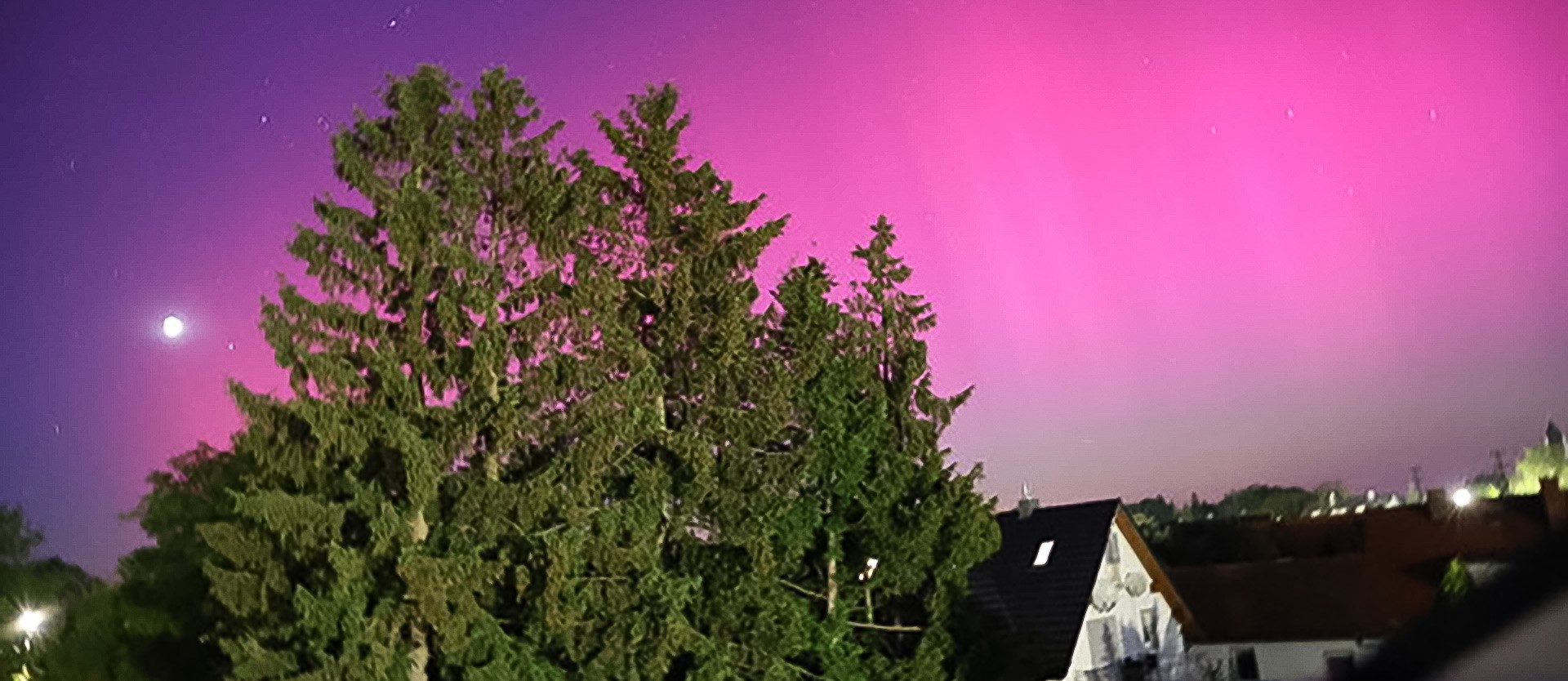
A colourful and bright night

The beautiful spectacle, which could be seen in various parts of Germany, was caused because our sun has a mood to focus most of its electromagnetic radiation to a limited region of its massive surface. If the magnetic field of the sun becomes locally strong enough that it traps and accelerates the charged particles inside it for a long period of time this magnetic region becomes bigger and bigger till the gravity of the sun cannot hold it any more, then all those particles which were accelerating for such long time suddenly are released. “As a result, you have emission of broadband radiation from Radio-Frequency to gamma rays as well as high speed charged particles, and some of them are coming toward earth”, explains Dr. Keyhan Golyari, physicist in the attoworld-team at the Max-Planck-Institute of Quantum Optics and the one who took these amazing pictures.
Further he explains what happens when these solar flares hit the earth: “Our spherical home luckily has a magnetic core and a layer called magnetosphere, now when these swarm of solar particles rush toward the earth they disturb the peace of the magnetosphere and so the charge particle in this layer start to dazzle, and a dazzling charged particle is radiated at optical frequency.”

Usually, the solar flares are weak or they don`t face us at all so you can see the occurrence of these breathtaking events only where the magnetic field of earth is strong enough, like in the poles. This because the magnetic field lines are closer at the poles drawing the particles from solar winds into deep atmospheric layers (see graphic). Luckily this time we didn’t have to travel to the north or south pole to see them. Apparently, the reason we got to see the auroras in Germany this time is because stronger solar flares caused a geomagnetic storm of the highest level G5. A geomagnetic storm is a temporary disturbance of Earth´s magnetic field caused by strong solar wind currents. The geomagnetic storm on May 11th was one of the strongest ever seen since 2003. “But if the sun is making a huge scene like what we had couple of nights ago then naturally the latitudes with weaker magnetic field can also experience the same incredible solar shows. and I was a lucky one to take picture of that heavenly dance”, Keyhan says pleased.
In addition to this Keyhan explains that the color of the auroras depends on the altitude. “Red color appears at highest altitude which is emission of photons from excited Oxygen atoms at 630 nm, at lower altitude depending on the collisions of particles, the red radiation is suppressed and green light around 557.7 occurs, then you go to lower altitude and molecular nitrogen comes to dance a bit and it radiates at 428 nm (i.e., violet radiation)”. And that is why we get to experience a color show so diverse.
How did Keyhan take the pictures? As you may have notice taking pictures of any phenome in the sky or the just the moon doesn’t turn out to well with just a phone camera. “I took the pictures with Canon EOS R8 camera with a 24-105 mm lens. using I think ISO of 24000 f number 5.6 and aperture opening of 1/4. With phones I guess is the same you need a high ISO number and long exposure time”, explains Keyhan.

You may now wonder why was an attosecond physicist taking pictures of an astronomical event? “First of all, physics was born from looking at the skies, second Attoscience is mainly spectroscopy from a time domain point of view. Astronomy is also mainly a way of measuring signals that come from the heavens and doing spectroscopy on them. Apart from that I didn’t even know it was going to be a solar flare that night, what I knew is that there was this nice conjunction of moon and the two constellations, Gemini and Auriga (see picture), since where I live is in the middle of nowhere it was easy for me to go out and take a picture of the moon but then I realized there was this extra thing going on which turned out to be solar flares hitting our atmosphere, so I got lucky.”
Most of scientific discoveries were unintended. “Sometimes you are looking for something else and you end up finding something better”, moreover Keyhan explains that his interest in astronomy rose from his Bachelor time in Tehran, Iran, where the Iranian desert provided a perfect place to glaze at the stars.
To say the least we have the sun and our magnetic field to thank for such spectacles, and also perhaps a bit of luck.












